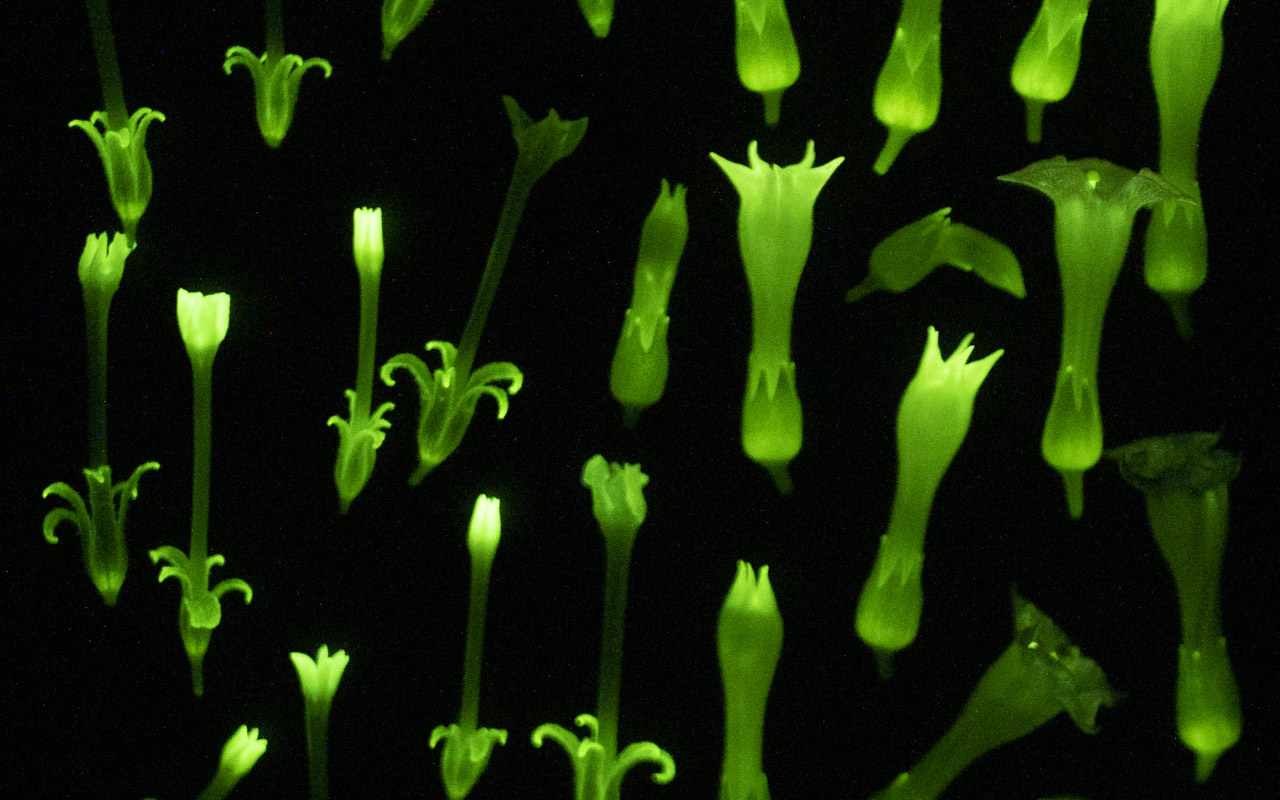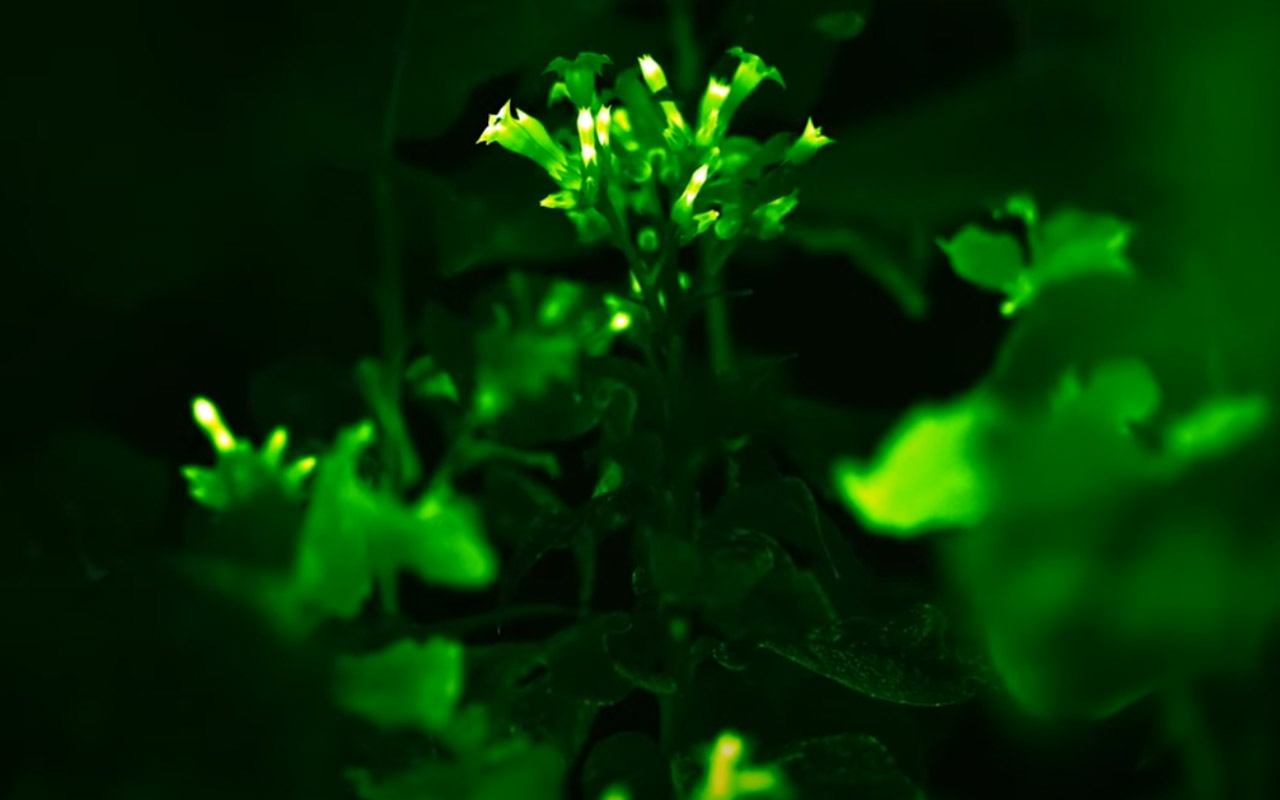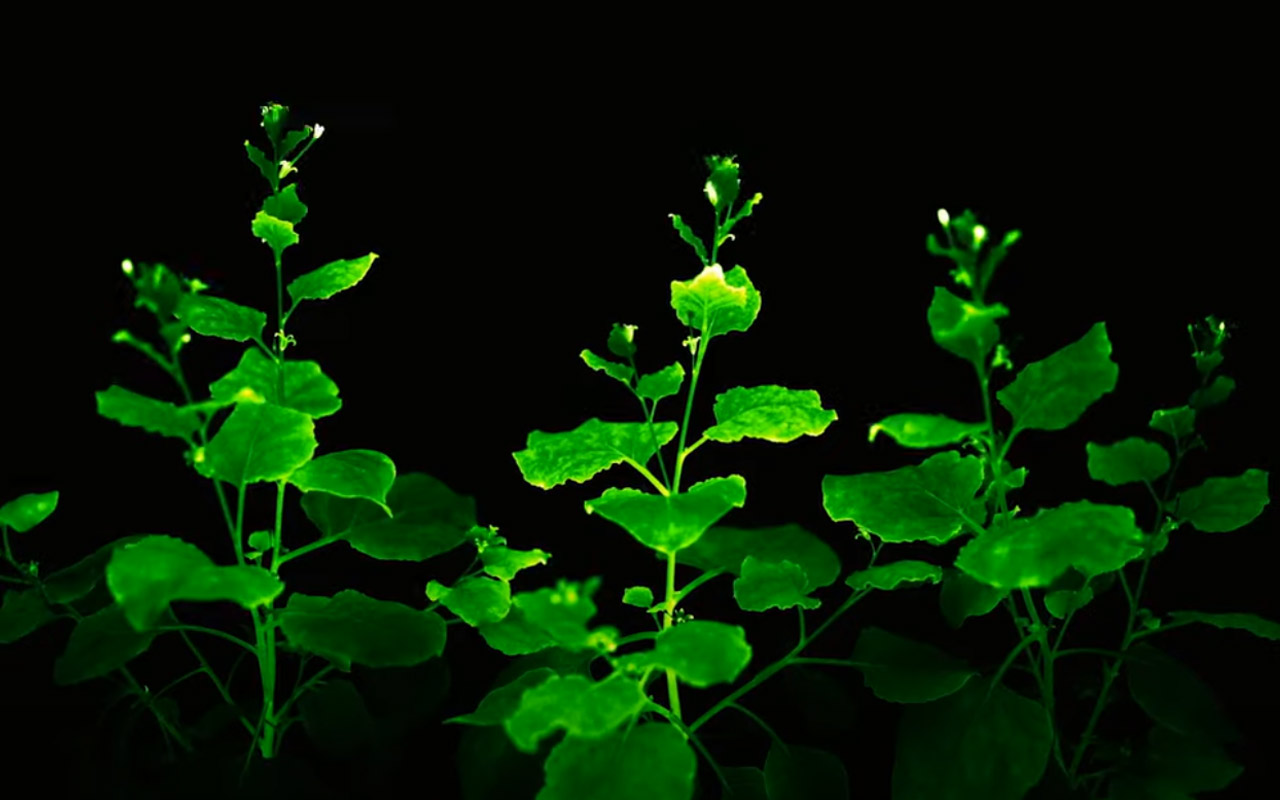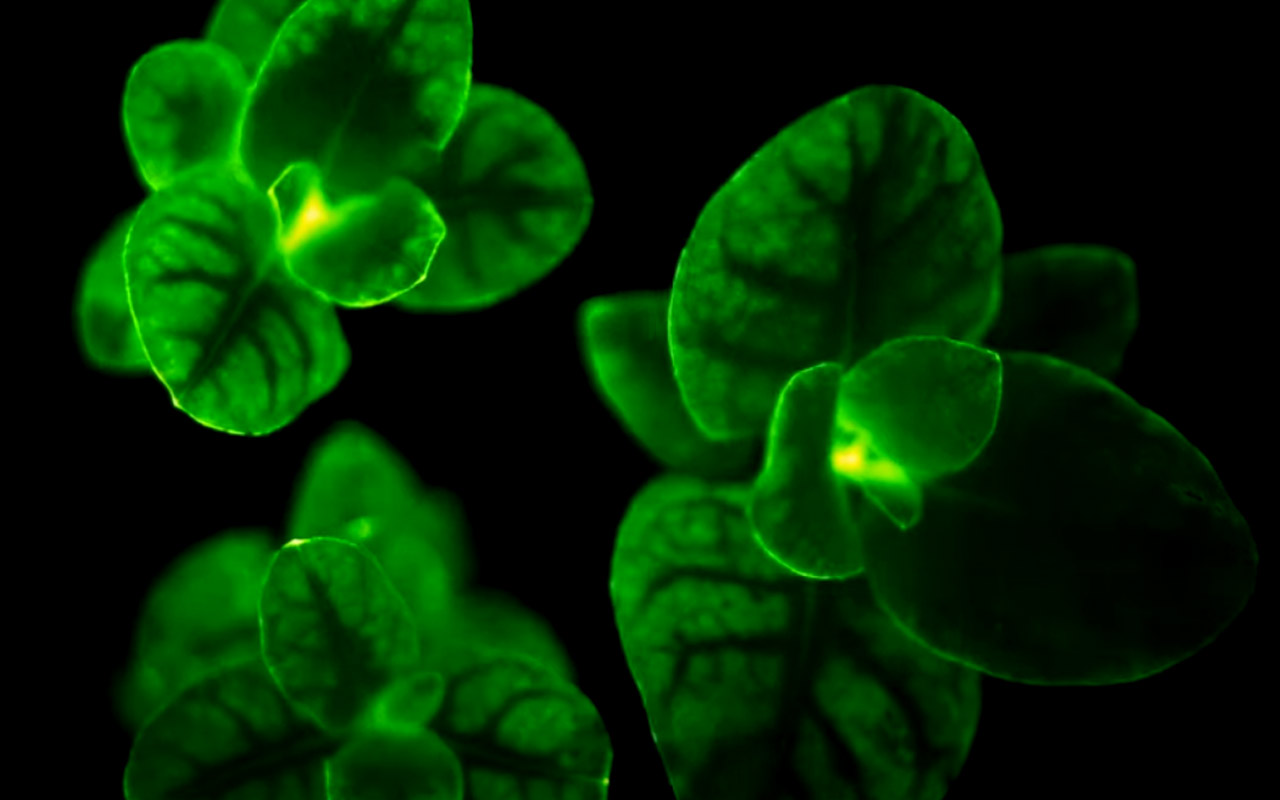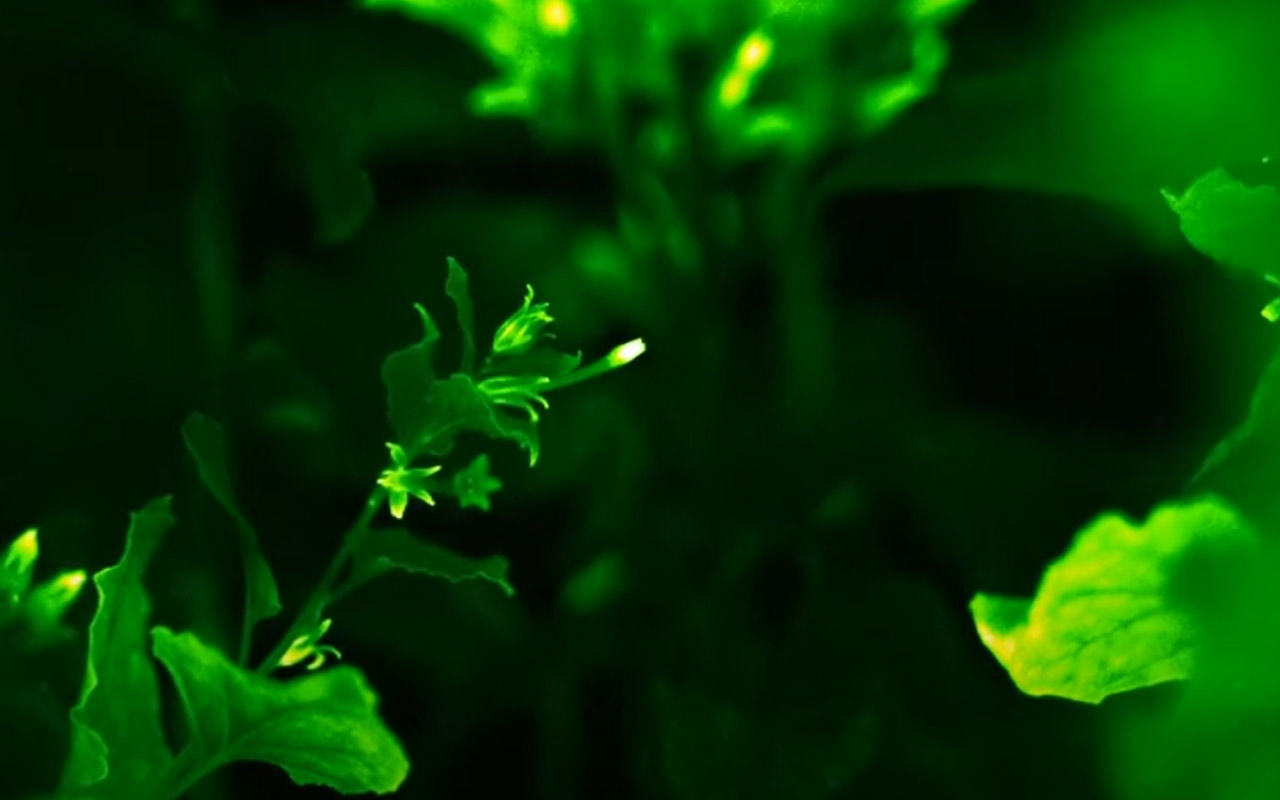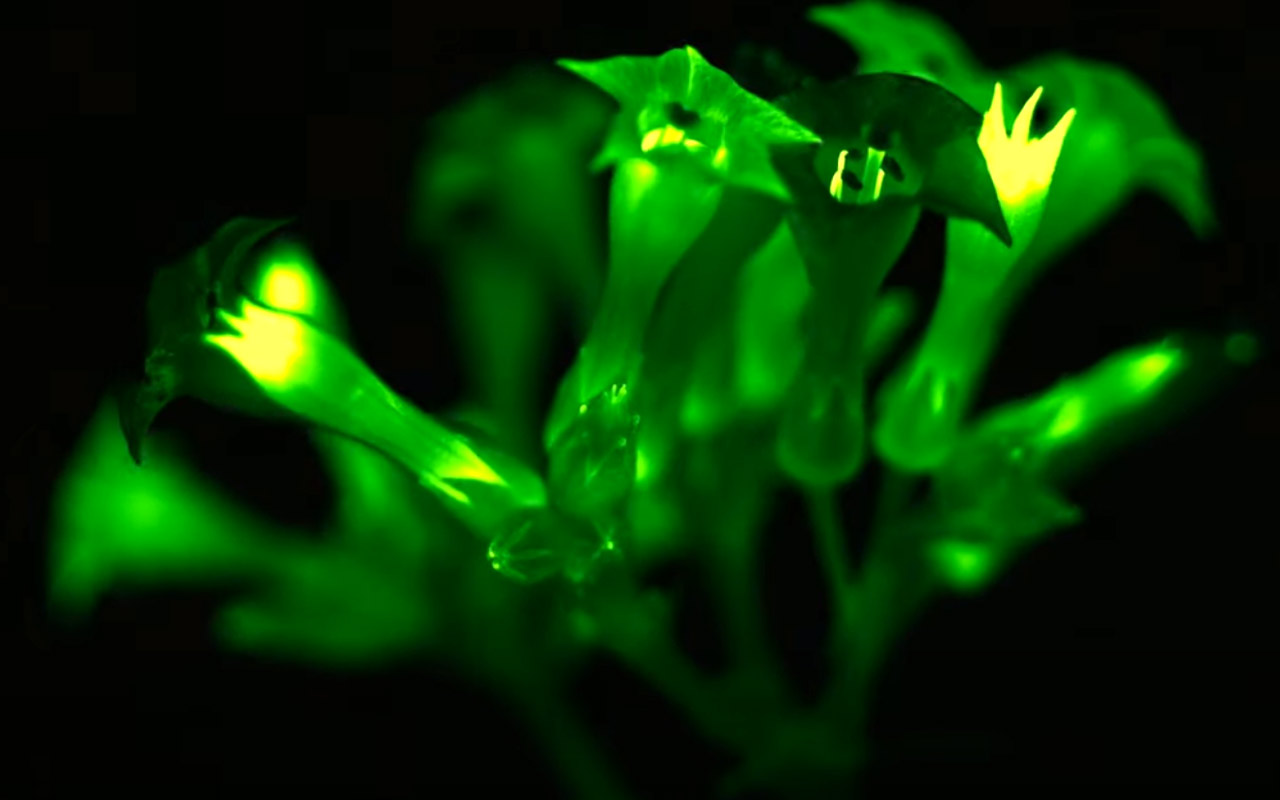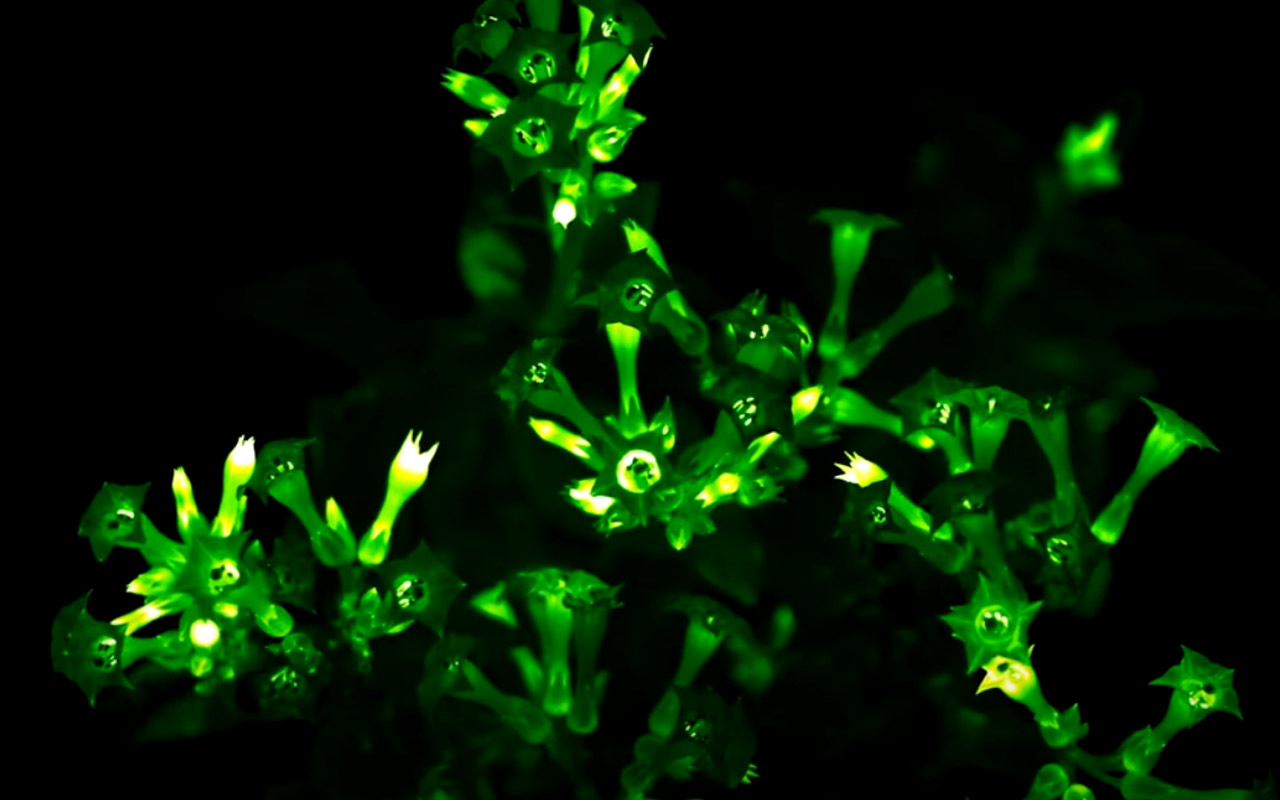Self-Sustained Luminescent Tobacco Plants Stay Bright All Life Long
A group of researchers engineered a group of tobacco plants to product self-sustained luminescence that lasts the plant's whole life long. The light is visible to the human eye. These researchers at the Moscow-based biotech startup Planta and the Russian Academy of Sciences suggested in their report that their findings "could underpin development of a suite of imaging tools for plants." That's radical potential for the future of living light!
Given the global pandemic situation in which we all reside here in the Spring of 2020, it's nice to hear, read, and see some good news in research and development. Bioengineered self-lit tobacco plants aren't something we expected from scientists while the most common big research news of the day is all about coronavirus, pandemic, and COVID-19. The research done by Planta and demonstrated here isn't just about the future of health, it's about the future of light and vision.
In the pages of the latest Nature Biotechnology, the results of the work done by researchers Tatiana Mitiouchkina, Alexander S. Mishin, et al. are shown in bright green. Above and below you'll see examples of their work. The video above shows some long-term time-lapse imagery of the plants created by the team at Planta.
These tobacco plants were engineered with a fungal bioluminescence system that converts caffic acid into luciferin. With this system, these plants generate light that is visible to the naked human eye.
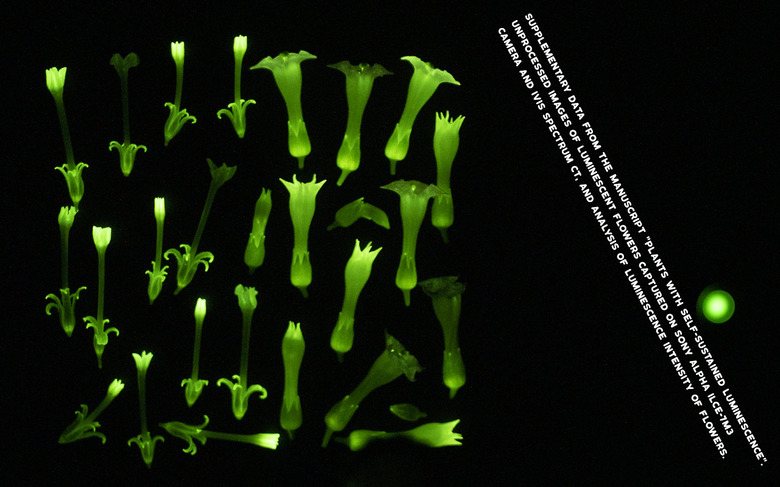
The team suggested that the light generated by these plants could provide new quantifyable elements in future research. "By enabling autonomous light emission, dynamic processes in plants can be monitored, including development and pathogenesis, responses to environmental conditions and effects of chemical treatment," wrote the researchers in their paper. "By removing the need for exogenous addition of luciferin or other substrates, these luminescent capabilities should be particularly useful for experiments with plants grown in the soil."
You can find more information on this topic in the research paper published this week. Mitiouchkina, T., Mishin, A.S., Somermeyer, L.G. et al. Plants with genetically encoded autoluminescence. Nat Biotechnol (2020). See code DOI:10.1038/s41587-020-0500-9 at Nature as published April 27, 2020.

